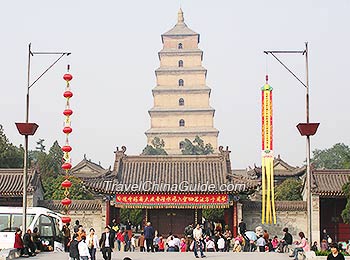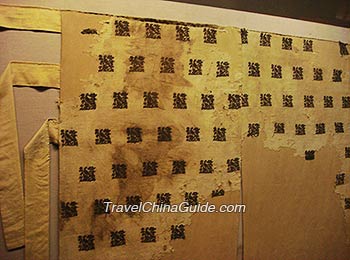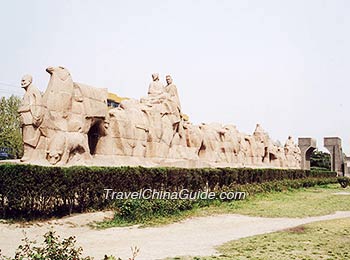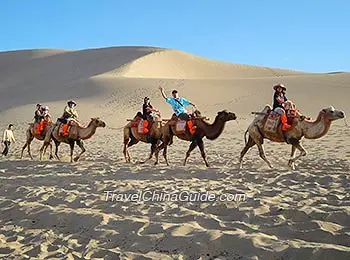History of Silk Road
 |
| Big Wild Goose Pagoda |
Silk Road in Different Dynasties
This route was opened up by Zhang Qian in the Western Han Dynasty and the routes were gradually formed throughout the Han Dynasty. This trade route spent its childhood and gradually grew up in this dynasty. With the establishment of the Tang Dynasty, which saw rapid development of economy and society, this famous trade route reached its most prosperous stage in history. During the reign of Yuan Dynasty, it experienced its last flourishing period.
Silk Road in Western Han Dynasty (206 BC–24 AD)
From 139 BC to 129 BC, Zhang Qian set out on his journey to the Western Regions twice, pioneering the world-famous route. Several successful wars against the Huns were commanded by Wei Qing and Huo Qubing (famous generals in Han Dynasty), which removed obstacles along this trade route. The Great Wall was also built in the west to protect the safety of the trade route. In 60 BC, Han Dynasty established the Protectorate of the Western Regions in Wulei (near now Luntai) to supervise this northwest area, which greatly enhanced the trade along this time-honored route.
![]() See more about:
See more about:
Wei Qing and Huo Qubing Beat Back the Huns
Relation Between Great Wall & Silk Road
 |
| A Piece of Silk |
Silk Road in Eastern Han Dynasty (25–220)
Ban Chao and Ban Yong conducted several expeditions to the Western Regions to suppress rebellions and re-established the Protectorate of the Western Regions, ensuring peace and trade along this important route.
Silk Road in Tang Dynasty (618–907)
With the establishment of the Tang Dynasty and great prosperity during this time, the road rose to its most flourishing period in history. Before the Anshi Rebellion (755–762) in the Tang Dynasty, this world-famous road experienced its "Golden Age" of development.
Silk Road in the Yuan Dynasty (1271–1368)
Along with the growth of the Mongolian Empire and the establishment of the Yuan Dynasty, the route regained its vigor and became prosperous once again. It enjoyed the last glorious era during this period.
In 1271, the great Mongolian ruler Kublai Khan established a powerful Mongol Empire – Yuan Dynasty (1271-1368) at Dadu (the present Beijing). The territory of the giant empire was the largest one in Chinese history, which stretched as far as Mongolia and Siberia in the north, South China Sea in the south, Tibet and Yunnan in the Southwest, Stanovoi Range (Outer Khingan) and Okhotsk in northeast, Xinjiang and Central Asia in the northwest. Even West Asia and Russia were under the control of this empire.
 |
| Xi'an Silk Road Sculptures |
The Mongol Empire destroyed a great number of toll-gates and corruption of the Silk Road; therefore passing through the historic trade route became more convenient, easier and safer than ever before. The Mongolian emperors welcomed the travelers of the West with open arms, and appointed some foreigners high positions, for example, Kublai Khan gave Marco Polo a hospitable welcome and appointed him a high post in his court. At that time, the Mongolian emperor issued a special VIP passport known as "Golden Tablet” which entitled holders to receive food, horses and guides throughout the Khan’s dominion. The holders were able to travel freely and carried out trade between East and the West directly in the realm of the Mongol Empire.
Although maritime transport had an influence on the route, many westerners, Chinese envoys and caravans traveled along this ancient trade route. However, the historically important route could not contend with expansion in the field of navigation which assisted its demise.
 |
| Camel Team of Tourists, Dunhuang |
Many great events happened on this ancient road, making the trade route historically important. Famous travelers along the road were its bright pearls, making it glorious. A great number of soldiers gave their lives to protect it. These are some of the reasons the road is still a time-honored treasure.